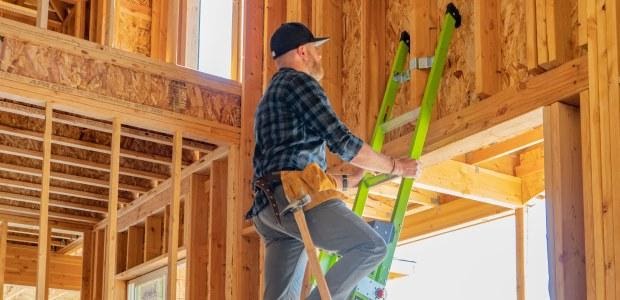ladder safety are necessary tools that appear to be simple to use. Despite this, far too many construction workers are injured or killed each year as a result of ladder falls. Reminding crews of basic ladder safety precautions can help keep them safe and out of the hospital.
Statistics on ladder injuries
Ladders caused 7,890 accidents necessitating days off work in the construction and extraction industry alone in 2019. In addition, 93 workers were killed as a result of ladder-related injuries.
What are the factors that contribute to ladder-related falls? The main causes of falls in a Harvard School of Public Health study on the safety of portable ladders used in construction were:
40 percent: The ladder shifted 24 percent: A foot slid or skipped a step 18 percent: The worker lost balance
In 4% of cases, the ladder collapsed, and in another 4%, the individual was struck by an object.
Provide sufficient training and encourage workers to observe ladder safety guidelines to limit the likelihood of injuries.
Select the appropriate ladder.
The ladder you select is important. Use the appropriate ladder for the job.
Type of ladder
Ladders are either fixed or moveable. A structure has a fixed ladder attached to it. A ladder that gives long-term access to rooftop mechanical systems for maintenance teams is one example.
A portable ladder can be moved from one location to another. Stepladders, straight ladders, extension ladders, platform ladders (for two-handed activities), and tripod ladders are all options (for work in corners and next to stationary objects).
Material
Another factor to consider is the material of the ladder. Metal ladders are incompatible with electrical work or power lines. Metal ladders, on the other hand, may be desirable in locations of heavy wetness, where wood ladders can decay, if there are no electrical hazards nearby. Fiberglass ladders are also a good option because they are resistant to both weather and electricity, but their higher weight makes them difficult for one person to handle alone.
Weight carrying capacity/duty rating
Another crucial consideration is maximum weight capacity, sometimes known as duty rating. Ladders are designed with certain applications in mind. When using a platform ladder for ceiling repairs, for example, ensure that the duty rating is sufficient for the worker’s weight plus any tools, supplies, or equipment.
The following are the five most frequent duty ratings and their weight limits:
- 3rd kind (light duty). These are standard household ladders that range in length from 3 to 6 feet and can sustain up to 200 pounds.
- The type II (medium duty). Medium duty ladders range in length from 3 to 20 feet and are intended for commercial use (painters/electricians). They can withstand weights of up to 225 pounds.
- I’m the first type (heavy duty). Heavy duty ladders, which range in length from 3 feet to 20 feet and can support up to 250 pounds, are utilised in professional services (construction/public utilities).
- IA is a type (extra heavy duty). These ladders are comparable to heavy duty ladders, except they can hold up to 300 pounds.
- IAA is a type (extra heavy duty). These can hold up to 375 pounds.
Before using, check for any damage.
Ladders that are not in good functioning order should be taken out of use until they can be repaired. Some inspection tips:
- Examine the rungs, bolts, nails, and screws for any that are loose or missing.
- Check that the non-skid feet are not worn and are in good condition.
- Examine stepladders for wobble and hinge damage.
- Examine wood ladders for decay and metal ladders for rust or corrosion.
Examine OSHA’s ladder safety requirement.
Here is a list of OSHA ladder safety regulations that govern how workers must utilise ladders:
- Place a ladder one-quarter of the way away from the supporting wall.
- Place the ladder on stable ground, not on materials or debris.
- When utilising a ladder to gain access to the roof, the ladder must extend at least 3 feet above the surface of the roof.
- Maintain three points of contact: two hands and one foot, or two feet and one hand. Maintain at least one hand on the ladder at all times.
- Climb no higher than the third rung from the top of an extension/straight ladder, or the second tread from the top of a stepladder.
- A metal ladder should not be used within 10 feet of an electrical outlet.
- Never attempt to “walk” a ladder into a new position while standing on it.
Remember the 4-to-1 ladder safety rule: The ladder’s base should be 1 foot away from the building for every 4 feet of height to where the ladder rests against the structure. If the ladder is 12 feet high where it meets the building, it should be at least 3 feet away from the building’s base. Mijnladderlift if offering the ladderlift hurren in Antwerp at an affordable rate.


